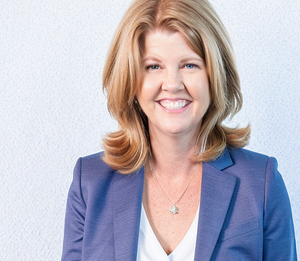Let's dive deeper into what I suggest happens in each meeting type. I give you agenda templates for three different meetings — and explain each item. Let's begin!
The Documents:
Next Up:
I suggest watching this video next:

The Transcript:
Let's do a deep dive into some of these agendas. And I'm going to give you agenda templates for three different meetings. The leadership meeting, which happens weekly between the first and second in command, the staff meeting, which is where a lot of work gets done, sort of the driving of the business gets done. That's the second in command and the department heads.
And you know that I use these terms just to identify the positions in the org chart. I know it sounds a little corporate, but you and I will be working together to identify who in the world. We mean, when we talk about these things, and then I'm almost going to go into a project meeting, which is anything, anyone that's working on any project,
and that can happen weekly or as needed. Now these are very similar templates, but they are a little bit different. So let me switch over to leadership. And I want to actually first start talking about just the yellow sections here. The first one is steer the ship. The second one is this thing called IDSM, which stands for identify, discuss,
and solve. And then of course we just conclude. So let me just talk about those things. So steering the ship. So imagine you are the captain of an aircraft carrier and you're up on the bridge and there's some things you need to do to, to make your mission successful. You need to know a few things about the ship. You certainly don't need to know everything about the ship,
but you do need to know some crucial aspects. Things like the fuel tank, how fast you are going, what's the direction that you're going. And you're going to ask for that data to be reported to you because how in the world do you know if you're doing a good job, piloting your ship? If you don't understand like what some of the basic statistics and KPIs are about your ship.
So that's what we present first. So you'll notice that each in each of these meetings, of course they're not fire meetings. Our meetings are their own types. So we're not at all talking about urgent issues. We're talking about how to have a meeting cadence and meeting topics that move your business forward on the things that you've already stated are a priority. So under steer the ship,
there are three ways that you need to get information before you start discussing things. Because again, you need the context. You sort of need all stations to report in and armed with all of that information. You can now decide. What's the most important things that you need to be focusing the rest of your time on. So when you meet with your second in command,
you're going to look at a KPI scorecard, which is some very hand-picked relevant pieces of data about the health of your business. And when you look at them, you're going to look at them. These, you know, these, these data points with an eye towards, so what is this good? Is this bad? Is this something I need to jump on?
Is this something I need to celebrate? It's putting that number in context. What does it mean? And if there are any issues, you're going to drop them down. If I drop them down, what I mean is you're going to identify that there's an issue that you need to spend a little more time on, And that's going to go here under B.
And it's just going to be this a list, a laundry list of items that you, you all have identified as things you need to talk about. So you don't prioritize them yet because you don't know, you don't know the lay of the land yet. You don't know the full context, so you're just going to go, Hey, I need to drop that down.
Somebody's going to scribble it on the dropdown and you move on. So maybe you get through the KPI scorecard, and there's one or two things that you need to drop down. Or maybe there's a whole bunch of things that are amiss and you need to drop even more down. If you drop them down, then you want to review your quarterly or monthly priorities.
It's whichever your business is doing. And rocks is one of the words that get substituted for priorities, especially in the quarterly sense, quarterly rocks. Those are simply priorities. Just another word for them. That is the word that's used by the traction folks, the EOS folks. They are the ones that talk about visionaries and integrators and rocket fuel. It's their lingo.
I like it because, you know, there's that metaphor. When you put the big rocks into a vessel first, then you have room for the smaller rocks and you have room for the gravel. But if you do it in an opposite way, you know, if you, if you pour in the gravel first, which would be firefighting in our to kind of bring both metaphors home.
If we spend all our time firefighting and pay attention to gravel, we will not be able to fit our slower, bigger projects into our container. So we want to start with the rocks first. So by definition, these priorities are the most important things to get done this quarter. That's because we had a planning session and determined that these three, four or five things were the most important things to get done.
So if they're the most important things to get done, we need to understand how we're tracking to them. We have to be aware of our progress towards these goals and any of the roadblocks that stand in the way they cannot get eclipse by fire. So you have to make them top of mind, which is why they're number two on the agenda. So in the leadership meeting,
when it's just the two of you, the COO who has gotten this information during their staff meeting, the COO is going to give a short department sort of update in summary and drop down any relevant issues. So you're going to go through the rocks. Usually by department, maybe marketing has two operations. As one customer service has a couple and the COO is going pretty rapidly through each of them and talking about whether they're green,
yellow, or red, and if they're yellow or red status, then they are likely dropping down issues. The project update formula, how to give a good project update is covered in a separate video, but using this formula is the best way to provide updates on quarterly rocks. The third piece of context that you need before you start discussing things is the headlines.
And this could be team-related maybe some big clients or big referral partner related or market related, anything that's newsworthy. That's going to impact your frame of mind as you discuss things. So for instance, recession news, big vacation dates from the team that are going to impact, or perhaps might impact work. Any current events going on in the world that would affect the way you do business.
You want to surface them so that they provide the correct context as you go through your, your issues. So as you've walked through one, two or three, and as you've lived your week, you are going to have a list of issues to identify, discuss, and solve I D S. And so what you, what you have after the first part of your meeting<inaudible> list,
sort of in the order that it happened, that's how you're scribbling them down. You want to now step back and take a look at that list and take them in the priority order. Now that you have all the context, you know, what the burning issues are and the ones that might be able to wait a week or might be able to be solved offline.
So take them in priority order. And we're going to be very crystal focused on identifying what the issue is, discussing it, and then moving towards a solution. So sometimes this is a little bit of an art, but what is the point of your discussion? That's the first thing you want to identify together? All discussions should have an objective and the discussion should drive towards it.
Otherwise you burn minutes, you've chitchatted about something. You've actually talked through something, but you're not, you don't know what you're driving at, or you're trying to get a decision. Are you trying to hear multiple options so that you can go chew on them in your off time and come back with a decision later? What's the point of spending your time discussing this?
What are you driving to? Here are a couple examples. Bob's performance issues are ongoing, and we need to figure out whether we're letting them go or not. That's a very focused goal for your discussion. Are we letting him go, or are we not? Here's another example, marketing's number two. Rock is not going to be met. We needed to determine whether we chose a too ambitious number or whether marketing isn't prioritizing appropriately.
So you can see how that crystallizes what you would or would not have said during that discussion, because these are the two things that are on the table is the number too ambitious, or as marketing, not prioritizing appropriately, we need to decide between the two of those, and maybe there's some other possible options here, but it crystallizes the discussion. So then discuss,
right, but stick to the objective, resist those rabbit holes and those little side quests that can come up and a good meeting manager is able to manage the discussion, do that mental process check and say, are we still driving to whether we're going to let Bob go or not? That would be inappropriate sort of way of refereeing, this refereeing, that discussion to make sure that we are still appropriate.
You don't want to truncate the discussion, but you just don't want to keep repeating opinions or just sort of, you know, meandering towards nothing. You want to actually be driving towards your objective. And then once you get there, document the decision and the responsible person and the due date, and then off you go choose the next priority topic and identify what you need to determine about that and have your discussion and resolve it.
And you keep doing that pretty much until you run out of time or you run out of issues. So the good meeting manager keeps an eye on that laundry list and another eye on the clock and keeps doing process checks to make sure that the, that the, that what you need to get through is gotten through whether you need to extend your meeting a little bit longer,
whether you need to do some offline thinking, but you basically want to manage the time that you have really appropriately. And then you just conclude in a leadership meeting. The COO is in charge of bringing any of those to do's or decisions or the questions out to the team to be implemented. And the CEO gets to go off and do CEO things. So that is a leadership meeting agenda.
The staff meeting agenda is very, very similar. Now, remember, staff meetings are the second in command that COO and their department heads, and they are getting work done. This is the meeting that allows the COO to roll into this leadership meeting with the data for number two, because they've just sat and listened to their team, give those updates on the,
on the priority rocks. And they're able to translate them to the CEO in the leadership meeting. So this is the meeting where that happens. Again, we start with the scorecard. It may be a different set of numbers than this number, because remember this was the captain on the bridge. And the captain only needs to know a few things in order to determine that the business is healthy.
The COO will say, if there's something not on the scorecard, that's so damaging that they need that. You need to drop it down. But by and large, the handful of things here are going to give us a good briefing. So review the scorecard, drop down any issues. Again, you're reviewing the quarterly rocks or the monthly priorities and dropping down any issues.
So as each department head shows up to give a quick summary of each of their priorities. They're going to use again, that project update formula. What you're trying to determine together are three things. Did the priority work stay the priority. Work is one priority. Eating another priority. As far as time did fires take over your over your life for the last week,
are you able to spend 80% of your time on the things that you've declared are a priority? It's that 80 20 rule. If it's less than 80%, that's something that needs to get flagged and dropped down. Usually, unless it's a very obvious issue, maybe it's something on the calendar that, you know, it's going to be weird, but it's going to even itself out perhaps then it's not an issue,
but is the priority work the priority? Do you have enough work capacity between your hours and your team hours? This is the department heads answering the question. Do we have enough work hours to hit the priorities on time? Do we have enough budget as well? Do you have everything you need? So those three questions. If those are yeses, then their yeses and you move on.
If they're knows, they're probably going to be issues that you want to drop down. So I do have an optional key project update here. Now that's going to sound very, very similar. Sometimes the priority rocks in giving an update on the priorities is sufficient. Sometimes a priority, a quarterly rock is so big that there's a number of key projects that roll up into them.
That it's worthwhile getting a little bit more granular. Now we don't want to get too granular, but you want to get granular enough that you have a really good understanding of how the business is going. So if there are any key projects that weren't covered in number two, let's cover them here in number three, maybe a department or two we'll need to do this.
There's probably other departments where they have their one rock. That's their one rock. That's mostly what they work on. And you know, you don't need to have an actual, another project update here. They also have the headlines. If there's anything going on that they know about, usually that's where it bubbles up that gets solved here. And then the IDs is exactly the same.
You have a list of issues. Now you're able with the full context, you're able to look at them and prioritize, which are the hot ones and which are the ones that can go next. And you do the IDs format to identify, discuss, and solve. And then you conclude your meetings. Project meetings are, again, these are like the marketing meeting,
or perhaps it's the fall launch meeting, or perhaps it's the big move from CRM. Number one to CRM, number two meeting. But basically those are the meetings where this agenda. And again, it's very similar. So there's no KPIs. We don't, we're not, we're just managing a specific project. We're not trying to run the business. So we dispense with the KPIs.
We go right to project updates. We follow those guidelines here. That's the how to give a good project update indispensable as a, as a, a skillset. And together you're assessing is the priority work, the priority work. Do we have enough capacity? Do we have everything we need? There are, I do include a headline section just in case there's something,
you know, for instance, a software release that changes features or things like that. If there's any outside news that you need to consider, it falls in here. And then you're ideating, you're identifying, discussing, and solving and you're concluding. So those are the three types of meetings, very similar, just a little bit different. And that's going to allow you to make sure that the priorities stay,
the priorities, that the projects that aren't particularly urgent, but drive your business forward. Do you have your proper attention? And both the COO and the CEO are going to feel extremely well-informed about how everything is going, but in a very succinct manner.








Member discussion